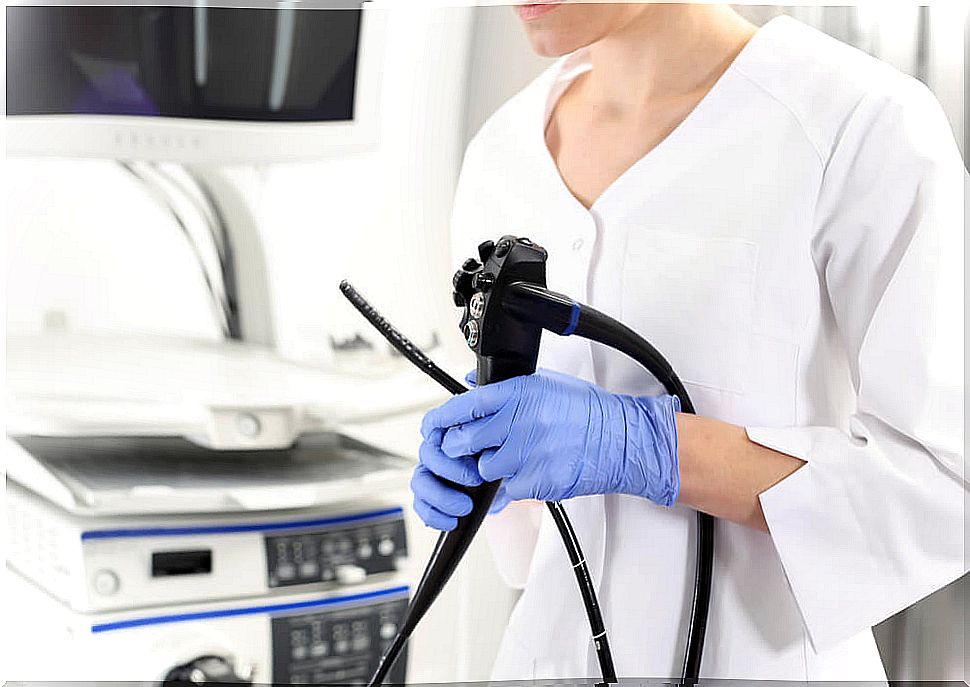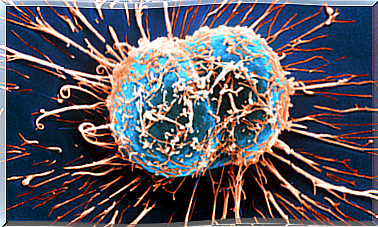What Is A Colonoscopy Done For?
Colonoscopy is a clinical test performed to diagnose possible problems in the colon. This test allows you to explore the state of the large intestine (colon) and the terminal part of the small intestine, or ileum.
The goal of colonoscopy is to detect if there are abnormalities in the walls of the large intestine. Also determine if the rectum and ileum have any abnormal appearance. The examination makes it possible to establish, corroborate or complement the diagnosis of any gastrointestinal disease.
A typical colonoscopy is done using an instrument called a colonoscope. This is a long, narrow and flexible tube, which has a small camera at one end, with light, and which projects the images on a monitor.
There is also virtual colonoscopy, in which simulated images of the rectum and colon are generated through X-rays and the use of computers.
When is a colonoscopy ordered?

In principle, the doctor orders a colonoscopy when there are severe changes in a person’s bowel habits. Also when there is recurrent and severe abdominal pain, especially if this is accompanied by weight loss for no apparent reason.
Other reasons that may lead to a colonoscopy include:
- Episodes of bleeding from the rectum or blood in the stool
- Chronic diarrhea
- Iron deficiency anemia or iron deficiency
- Changes found in the test called a barium enema
- Suspicion of Crohn’s disease or ulcerative colitis
- Detection of polyps on radiographic test or a sigmoidoscopy
A colonoscopy is often ordered in people with a family history of colon cancer and in those over the age of 50, especially if they have had inflammatory bowel disease. In these cases the purpose is mainly preventive.
To perform a colonoscopy requires careful prior preparation. This includes taking laxatives to cleanse the intestine and following a strict diet. The doctor must be informed about the possible allergies of the patient and the medicines that he takes normally.
Procedure description

Typically, the colonoscopy is performed by a gastroenterologist, with the collaboration of a nursing assistant. The first thing that is done is to apply a medication intravenously. This allows the patient to be relaxed and sleepy during the procedure.
The clothing is then removed, a hospital gown is put on, and the patient is asked to lie down on a gurney, on the left side, with the knees drawn to the chest.
The doctor then feels the anal opening and then inserts the lubricated colonoscope there. He then slowly moves it through the colon, while watching on a monitor. The usual thing is that the patient experiences some discomfort such as pain and the need to pass gas or defecate.
The doctor may order several changes of position. During the exam, other medications may be given intravenously.
Eventually the colonoscope is carefully removed, which usually also causes a lot of gas to come out of the intestine. The anal area is wiped with paper and the patient is observed for one to two hours. The doctor will indicate when you can resume the usual diet.
Complications and results

Colonoscopy is a very safe procedure that only rarely leads to complications. Most bothersome is usually diarrhea that is caused intentionally before the exam to empty the bowel. Also the modesty that some patients experience during the procedure, due to gas and intestinal noises caused by the exam.
Sometimes there is bleeding after a colonoscopy, especially if the exam was used to perform a biopsy or a polyp was removed during the colonoscopy. After a few days it disappears.
In extremely rare cases the colonoscope causes lesions in the intestine and gives rise to more prominent bleeding. If after the exam there is heavy bleeding, very severe pain, fever, or any other unusual symptoms, you should go to the hospital.
The results of colonoscopy make it possible to diagnose various diseases with high reliability. It is an ideal test to detect polyps or ulcers. Sometimes biopsies or other types of samples are taken, which must be examined by the pathologist. This is how it is determined if there is cancer or other pathologies.









